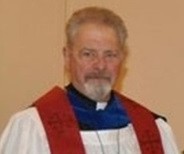 When we say “The Reformation”, we almost always mean the Protestant Reformation that took place in Europe between, roughly, AD 1517, when Luther posted his 95 theses on the door at Wittenberg, and AD 1648, with the end of the 30-years War. That is as good a set of dates as you could find, though they are not perfect, on either end. Nor do they really address at all the Catholic Counter-Reformation, which began at the Council of Trent in 1548 and continued for nearly twenty years.
When we say “The Reformation”, we almost always mean the Protestant Reformation that took place in Europe between, roughly, AD 1517, when Luther posted his 95 theses on the door at Wittenberg, and AD 1648, with the end of the 30-years War. That is as good a set of dates as you could find, though they are not perfect, on either end. Nor do they really address at all the Catholic Counter-Reformation, which began at the Council of Trent in 1548 and continued for nearly twenty years.
The three great strands of the Protestant Reformation were the Lutheran, the Calvinist, and the Anglican. Lutheran reforms were generally concentrated in Northern Germany and Scandinavia, and in those parts of the New World settled by people from those regions. Calvinist reforms were most notable in Holland, France and Scotland and, again, those parts of the New World settled by people from there. So it is that we find Lutheranism in the United States in both the upper Midwest, where Swedes and Norwegians settled, and in Missouri and Ohio, where many Germans emigrated. Likewise, there are Huguenot names in Virgina and South Carolina, appearing simultaneously with the Scots Presbyterians in the same states, but in entirely different communities. And, of course, the English Puritans were Calvinist without being either Presbyterian or Huguenots. The Puritans were entirely a part of the third strand of reform, Anglicanism. These three strands ignore, too, a whole separate strand, that of the Anabaptists, who were then, as they are today, outside the mainstream of the Reformation, though they co-existed with it.
Henry VIII was a loyal and devout Catholic. He had strongly supported the Pope in his wars against competing secular kings, and he had written extensively concerning Catholic worship. But, Henry tired of being used for political purposes by the then-Pope, Leo. In particular, it bothered him that the kings of both France and Spain were allowed to have significant control over the Churches in their countries, while he had none, at all. In England, the Pope was completely in charge of the Church, as he had been ever since the middle of the 12th Century. Henry wanted three things: a divorce from his Spanish wife, a son to inherit the Kingdom, and some income from all the religious property in England. Other kings had had the Popes support in getting at least two of the three, and Henry wanted to be treated equally. The Pope said “no” to all three.
As a result, Henry separated from the Pope, and thus established the third great strand of reform, Anglicanism. Henry’s idea of the Church was that it would be completely Catholic, but many of his Churchmen were already secretly Lutheran or Calvinist. It was only a matter of time before the orientation of the English Catholics had to be sorted out: Who would be in charge? The King, or the Pope? Or, somebody else?
